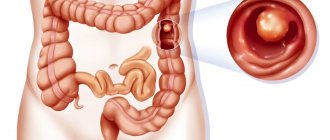Metabolism is the set of chemical reactions that keep a person alive. Our body receives all useful elements from the external environment, mainly from food and water. Metabolic disorders can negatively affect the condition of all organs and systems, and therefore require mandatory treatment. There are metabolic disorders:
- protein;
- carbohydrate;
- fat;
- water;
- mineral;
- other substances (iron, iodine, etc.).
Causes of metabolic disorders
The main causes of metabolic disorders include:
- Stress.
- Genetic predisposition (congenital deficiency of certain enzymes).
- Unbalanced diet.
- Intoxication.
- Frequent diets.
- Bad habits: smoking, drinking alcohol.
- Malfunctions of the thyroid gland, adrenal glands, pituitary gland.
- Taking hormonal contraceptives and other medications.
- Worm infestations and other parasitic infections.
- Viral diseases - influenza, measles, chickenpox.
- Sedentary lifestyle.
What is metabolism
Metabolism is a set of chemical reactions in the human body that break down food and convert it into energy. Special enzymes take part in metabolism, which speed up the process of digesting food and absorbing nutrients.
There are 3 types of metabolic disorders that can occur in the body:
- Protein metabolism disorder. A person constantly feels hungry, is in an irritated and restless state, and becomes depressed. In this case, a protein diet will help.
- Disturbance of carbohydrate metabolism. A person cannot live a day without coffee, is indifferent to sweets, and has no appetite. The opposite picture may be observed - a person constantly eats sweets, snacks on sweets and cakes. A carbohydrate diet under the supervision of a specialist is necessary.
- Combined. With such a metabolism, a person constantly feels weak, drowsy, anxious, cannot live without sweets and is prone to obesity.
Metabolic disorders: symptoms
Common signs of metabolic failure are:
- Unhealthy skin color.
- Labored breathing.
- Sudden weight gain or loss without objective reasons.
- Joint and muscle pain.
- Deterioration in the quality of hair, nails, skin.
- Thermoregulation disorders (increased sensitivity to cold and heat).
- Sleep problems.
- Changes in blood pressure.
- Edema.
- Prolonged increase or decrease in body temperature.
- Frequent urination.
- Bowel problems: diarrhea or constipation.
- Memory impairment.
- Mood swings.
- Skin rashes.
- Tooth decay.
Symptoms of metabolic disorders in women include infertility and menstrual irregularities (the most common manifestation is scanty discharge).
Also, failures of different types of exchanges may have their own signs, identified by the results of laboratory tests. If carbohydrate metabolism is disturbed, the following may occur:
- Changes in the concentration of glucose in the blood (therefore, a common consequence of a failure of carbohydrate metabolism is diabetes mellitus - a violation of the absorption of glucose).
- Presence of glucose in urine.
Symptoms of lipid metabolism (its disturbance is usually associated with deterioration in the digestion and absorption of fats) are:
- Steatorrhea (presence of lipids in stool).
- Development of cholesterolosis (deposition of cholesterol in cell membranes or on the walls of blood vessels).
Signs of protein metabolism disorders are:
- Content of uric acid in the blood.
- Presence of amino acids in urine.
- Increased bilirubin levels in the blood.
Complications
There are two main dangers with this disease:
- Diabetes mellitus type 2. If you don't make lifestyle changes and get your excess weight under control, you may develop insulin resistance, which can cause high blood sugar levels. It ultimately leads to type 2 diabetes.
- Diseases of the heart and blood vessels. High cholesterol and high blood pressure contribute to the formation of plaque in the arteries. These plaques narrow the arteries, which can lead to a heart attack or stroke.
Consequences of metabolic disorders
Metabolic disorders can lead to the development of the following diseases:
- Diabetes mellitus is the body’s inability to absorb glucose due to a failure in the synthesis of the hormone insulin.
- Coronary heart disease – acute or chronic damage to the heart muscle (myocardium) due to a violation of its blood supply.
- Atherosclerosis is a chronic disease in which narrowing of the lumens of blood vessels occurs due to deposits on their walls (atherosclerotic plaques).
- Obesity is an increase in body weight due to pathological fat deposits.
- Gout is an inflammatory disease of the joints.
Metabolic disorders can also cause:
- Deterioration of bones and muscles.
- Delayed growth and development in children.
- Malfunctions of the cardiovascular system.
In children, the consequences of metabolic disorders can be:
- Rickets is a disorder of bone formation.
- Anemia (anemia) is a lack of erythrocytes (red blood cells that transport oxygen).
Popular questions
What happens if metabolic disorders are not treated?
Lack of treatment can lead to serious illness. For example, when there is a lack of iron in the body, iron deficiency anemia develops. This disease can cause a decrease in the body's defenses, poor healing of wounds and injuries, disrupt the contractile function of the heart, lead to respiratory failure and impaired circulation in organs, and slow down the synthesis of thyroid hormones.
Lack of iodine leads to irreversible changes in the function and structure of the thyroid gland, decreased intellectual abilities, slower metabolism and other more severe consequences. Dehydration is completely life-threatening; this condition should be treated as soon as possible. That is why it is important to seek professional medical help for any type of disorder.
Can endocrine diseases disrupt metabolism and cause weight gain?
Among the internal causes of metabolic disorders, endocrine diseases occupy the first place. A lack or excess of certain hormones can be associated with congenital anomalies, neoplasms, inflammatory processes, stress, deficiency of micro- and macroelements, drinking disorders, severe infectious diseases, etc. Yes, excess body weight can be associated with metabolic disorders and endocrine diseases, but more often appears due to external factors - family nutrition stereotypes, chronic overeating, high calorie food and physical inactivity.
Can metabolic disorders be prevented?
Only acquired metabolic disorders can be prevented. To do this, you should follow some medical recommendations:
- eat rationally, do not starve or overeat. Refuse mono-diets, limit intake of flour, fatty foods, fried foods;
- take vitamins, micro- and macroelements in consultation with a doctor in case of insufficiency and, if you are forced to limit the consumption of certain products;
- get enough rest, sleep at least 6–8 hours a day;
- quit smoking and alcohol;
- pay attention to physical activity;
- learn to resist stress or, if possible, eliminate emotional turmoil.
It is important to deal with eating disorders in a timely manner and at the first symptoms of pathology, consult a psychotherapist or nutritionist. Specialists at the VegaMed clinic successfully treat metabolic disorders. We provide comprehensive assistance: we carry out fast, accurate, informative diagnostics, and offer consultations with specialized specialists necessary for the full treatment of the disease. We have everything necessary to take effective measures - modern diagnostic and therapeutic equipment. The clinic's doctors are qualified specialists with many years of experience.
Diagnosis of metabolic disorders
To diagnose a metabolic failure, you need to consult a therapist. He will conduct an examination, collect anamnesis and refer the patient for studies, including:
- Blood and urine tests (general, biochemical, glucose).
- Glucose tolerance test.
- Blood cholesterol level test.
- Lipid profile.
- Computer tomogram.
- ECG.
Also, depending on the symptoms, instrumental studies (primarily ultrasound) of the kidneys, liver, pancreas, and organs of the endocrine system can be performed.
Symptoms of metabolic syndrome
When diagnosing MS, 4 parameters are distinguished:
- hypertension (high blood pressure);
- high blood sugar;
- obesity (waist circumference more than 102 cm in men and more than 88 cm in women);
- abnormal cholesterol levels (decreased high-density lipoprotein levels and/or increased triglyceride levels).
Each of these conditions is dangerous individually, but together they trigger a cascade of pathological processes and turn into a mortal threat to blood vessels and human life and health in general.
Doctors nicknamed this complex of diseases the “deadly quartet.” In fact, metabolic syndrome is not an independent disease. This is a group of symptoms that often occur together and increase the risk of other - even more severe - disorders.
Treatment
The tactics for treating metabolic disorders depend on the complexity and causes of the pathology. Minor glitches can be resolved by:
- Nutrition corrections.
- Lifestyle changes - maintaining a daily routine.
- Prescriptions of vitamin-mineral complexes.
- Physical education classes.
The type of diet depends on the nature of the disorder. In most cases, split meals are recommended: small portions, every 2-3 hours. Also exclude fried, pickled, salty, spicy, fatty foods. Limiting carbohydrates and animal fats may be necessary.
If the disorders are caused by enzyme deficiency or diseases, appropriate treatment is carried out. So, for diabetes mellitus, insulin therapy can be prescribed (if required), for thyroid diseases - hormonal medications. In some cases, surgical intervention is required (in the presence of goiter, pituitary adenoma).
Also, in case of metabolic disorders, sanatorium-resort treatment can be prescribed.
If you have symptoms of metabolic failure, you should consult a doctor. First, to fix a problem, you need to know its cause. This is impossible without diagnostic studies. This means that the patient will act according to intuition, which not only will not give the desired result, but can also aggravate the disorders. Secondly, self-medication often means taking vitamin-mineral complexes and dietary supplements. Again, not knowing exactly what substances the body lacks can increase the imbalance. And an excess of vitamins and minerals is no less dangerous than their deficiency.
Treatment of metabolic disorders requires an integrated approach. The patient may need the help of several specialists at once, for example, an endocrinologist, nutritionist, or psychotherapist. A psychotherapist will help you get rid of stress and sleep problems.
Risk factors
- Elderly age. The older a person is, the higher the risk of developing metabolic syndrome, according to statistics.
- Ethnicity. Hispanics are at greatest risk for developing metabolic syndrome. But this does not mean that Russians do not suffer from this disease.
- Obesity. As already mentioned at the beginning, excess weight increases the chances of developing MS.
- Diabetes. The likelihood of developing metabolic syndrome increases if the patient had diabetes during pregnancy (gestational diabetes). A family history of type 2 diabetes is also a reason for close attention to your health.
- Other diseases. The risk of metabolic syndrome is higher if the patient has had fatty liver disease, polycystic ovary syndrome, or sleep apnea.
Prevention
Prevention of metabolic failures includes:
- A balanced diet with a limit on fatty, starchy, sweet foods and the inclusion of fruits, vegetables, lean meat, and dairy products in the diet.
- Avoiding overeating and fasting.
- Maintaining vitamin and mineral balance in the body (to control it, preventive blood tests should be taken).
- Developing stress resistance and avoiding emotional shocks.
- Quitting bad habits - alcohol reduces the production of testosterone, which is necessary to maintain the quality of muscle mass, and when smoking, toxins enter the body, which is why energy is spent on detoxification.
When developing a diet, it is recommended to consult a nutritionist. He will take into account all the needs of the patient’s body and develop an individual diet that allows him to maintain metabolic processes in optimal condition.
Also, the prevention of metabolic disorders is a timely visit to a doctor. You should make an appointment as soon as you notice at least a few symptoms of metabolic failure.
Fatty degeneration
Diabetes
3974 10 September
IMPORTANT!
The information in this section cannot be used for self-diagnosis and self-treatment.
In case of pain or other exacerbation of the disease, diagnostic tests should be prescribed only by the attending physician. To make a diagnosis and properly prescribe treatment, you should contact your doctor. Fatty degeneration: causes, symptoms, diagnosis and treatment methods.
Definition
Fatty degeneration, or lipodystrophy, is a group of rare disorders that are characterized by complete or partial loss of subcutaneous fat, as well as its abnormal distribution, in the absence of a previous fasting or catabolic state. These diseases are accompanied by various metabolic disorders: insulin resistance, specific diabetes mellitus (lipoatrophic diabetes), fatty hepatosis, steatohepatitis, lipid metabolism disorders, arterial hypertension.
Fatty degenerations are quite rare conditions; according to various sources, their incidence ranges from 1 to 60 cases per 1 million population.
Causes of fatty degeneration
Fatty degenerations are divided into congenital and acquired. Congenital lipodystrophies are always hereditary and associated with genetic mutations that lead to metabolic disorders in adipose tissue, resulting in its atrophy.
The mechanism of development of acquired generalized lipodystrophy is unknown; the disease is assumed to be related to genetic mutations and autoimmune processes.
Genetic mutations are also suspected in the occurrence of acquired partial lipodystrophies. Today, the most common type of lipodystrophy is a special variant of acquired partial dystrophy - lipodystrophy, which develops as a result of highly active antiretroviral therapy in HIV-infected patients. In addition, there are local lipodystrophies, which are usually associated with injections of drugs, for example, insulin.
Classification of the disease
Fatty degenerations are divided according to the degree of fat loss into generalized, when subcutaneous fatty tissue is absent over most of the body, and partial, or segmental, when adipose tissue atrophies in certain areas of the body.
Hereditary and acquired lipodystrophies are divided into 4 types:
- congenital generalized lipodystrophy (CHL, Berardinelli-Seyp syndrome) with 4 types depending on the gene in which the mutation occurred;
- acquired generalized lipodystrophies (PGL, Lawrence syndrome);
- familial partial lipodystrophy (FPL, Dunnigan-Cobberling syndrome) with 3 types;
- acquired partial lipodystrophy (PPL, Barraquer-Simons syndrome).
Separately, there are fatty degenerations that develop as a result of other genetic syndromes and those associated with drug injections.
Symptoms of fatty degeneration
With congenital generalized lipodystrophy, immediately after birth or in the first year of life, the child develops a complete absence of subcutaneous fat. Lipoatrophy can occur on the trunk, limbs, and face. In severe cases of the disease, there is a significant risk of intrauterine growth retardation. Due to the lack of fatty tissue, the patient experiences pseudohypertrophy of skeletal muscles, as a result of which the patient has an “athletic” appearance (usually observed in children over 10 years of age). Patients with generalized lipodystrophy are tall (ahead of bone age), they may have an enlarged lower jaw, hands and feet, there is an enlargement of the clitoris in women and external genitalia in men, children have a very high appetite - they are “insatiable.” Due to the difficulty in digesting fats, the level of lipids (triglycerides, cholesterol) in the blood increases and the load on the organs involved in their metabolism increases. There is an abnormal accumulation of fat in the liver, kidneys, myocardium, and skeletal muscles, which disrupts their functions.
This type of lipodystrophy is characterized by severe fatty hepatosis, leading to liver enlargement, steatohepatitis, liver cirrhosis and liver failure.
Since metabolism is a balanced system, when lipid metabolism is disturbed, both protein and carbohydrate metabolism suffer. Disorders of carbohydrate metabolism lead to insulin resistance from the first years of life and to the development of type 2 diabetes mellitus by the age of 15-20 years. Such patients experience hyperpigmentation of the groin area, neck, armpits, weight loss, increased thirst, and excessive urination. Some forms of congenital generalized lipodystrophy are accompanied by damage not only to adipocytes (adipose tissue cells), but also to skeletal muscle cells and myocardium (heart muscle), which can lead to hypertrophic cardiomyopathy, heart failure and subsequently to an unfavorable outcome.
In addition, with this type of lipodystrophy, psychomotor retardation, intellectual impairment, hirsutism (excessive hair growth in women according to the male pattern - in the armpits, on the pubis, above the upper lip) or hypertrichosis (excessive hair growth in all areas of the body and head, not associated with the secretion of sex hormones). Due to the lack of subcutaneous fat, the veins of the upper and lower extremities bulge - this is called phlebomegaly. The characteristic appearance of the patient is a thin face against the backdrop of a developed figure, noticeable saphenous veins, increased size of the feet and hands, areas of hyperpigmentation (acanthosis nigricans) in the area of skin folds.
With acquired generalized lipodystrophy, a child is born with a normal amount of subcutaneous fatty tissue, and its degradation begins in childhood or adolescence and occurs gradually. Large areas of the body are affected, especially the face and extremities, including the palms and soles. In approximately a quarter of cases, patients with PGL are first diagnosed with panniculitis (inflammation of subcutaneous fat tissue), which manifests itself as local lipodystrophies. There are also PGL associated with autoimmune diseases (~25%) and idiopathic (~50%).
Familial partial lipodystrophies appear in childhood or adolescence. A progressive loss of adipose tissue begins in the chest, anterior abdominal wall and limbs with its redistribution to other areas - the face, neck and inside the abdominal cavity. This redistribution of subcutaneous fat may resemble Cushing's syndrome or create a false impression of an “athletic” physique in women. In men, the redistribution of adipose tissue and the expression of skeletal muscles are often perceived as a normal physique. Metabolic disorders develop after puberty and are more severe in women.
SPF is characterized by insulin resistance, a significant increase in the concentration of free fatty acids and triglycerides in the blood, accumulation of fat in skeletal muscle cells and hepatocytes, and impaired leptin secretion.
Patients have a high risk of developing diabetes mellitus and insulin resistance, dyslipidemia, mainly due to increased triglyceride levels, pancreatitis, liver steatosis, hyperpigmentation in skin folds (this symptom is less pronounced than with VHL), arterial hypertension. In rare cases, myopathies and cardiomyopathies may develop, as well as hirsutism, menstrual irregularities and polycystic ovary syndrome, however, in most patients, reproductive function remains intact.
Acquired partial lipodystrophy is characterized by a progressive loss of subcutaneous fat in the upper body - in the face, neck, chest, upper extremities, and epigastric region.
This process can begin at any age, lasts from several months to several years and moves from top to bottom from the head to the feet, but, as a rule, does not affect the lower limbs. On the contrary, some patients may develop excess accumulation of fatty tissue in the lower abdomen, buttocks and thighs. Metabolic disorders are less common than in other types of fatty degeneration, but PPL is associated with the development of chronic kidney disease.
Diagnosis of fatty degeneration
When collecting complaints and anamnesis, the doctor pays attention to the patient’s appearance, and also studies the family history of the disease to identify the nature of its inheritance.
From laboratory examinations the patient is given:
- general blood analysis;










